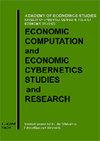以品牌为中心的y世代服装行为模型:两国比较
IF 1
4区 经济学
Q3 ECONOMICS
Economic Computation and Economic Cybernetics Studies and Research
Pub Date : 2023-06-21
DOI:10.24818/18423264/57.2.23.13
引用次数: 0
摘要
. 本研究主要通过使用购买前因、人口统计学和行为变量来调查Y一代的时尚服装购买行为和潜在的品牌忠诚度。采用主成分分析和逻辑回归的逐步方法考虑了400人(罗马尼亚人/南非人)的样本。受杂志和奖学金/助学金(罗马尼亚样本)以及名人、电视广告、购买频率和服装预算(南非样本)的影响,两国的人都表现出理性的购买行为。只有南非的样本建立了品牌忠诚度。本研究通过展示Y世代内部的形象,并通过揭示品牌忠诚度差异来扩展这一群体的异质性观点,从而丰富了文献。管理者可以根据理性的购买动机,利用杂志或电视广告中的代言人,为Y一代定位时尚服装品牌。该模型可以通过包括从一个服装类别购买的品牌数量,使用更多的度量尺度和其他预测因素来改进。本文章由计算机程序翻译,如有差异,请以英文原文为准。
Brand-Centred Fashion Clothing Behaviour Modelling within Generation Y. A Two-Country Comparison
. The study focuses on investigating the fashion clothing buying behaviour and potential brand loyalty within Generation Y by using buying antecedents, demographic, and behavioural variables. Samples of 400 people (Romanians/South Africans) were considered in a step-by-step methodology, using principal component analysis and logistic regressions. A rational buying behaviour for both nationalities was displayed, influenced by magazines and scholarship/bursary (Romanian sample), and celebrities, TV advertisements, buying frequency and budget for clothes (South African sample). Brand loyalty was established only for the South African sample. This study enriches the literature by exhibiting an intra-Generation Y image and extending this cohort’s heterogeneity view through the uncovered brand loyalty differences. Managers can position fashion clothing brands for Generation Y based on rational buying motives, using magazines or endorsers in TV advertisements. The model can be improved by including the number of brands purchased from one clothing category, employing more metric scales, and other predictors.
求助全文
通过发布文献求助,成功后即可免费获取论文全文。
去求助
来源期刊

Economic Computation and Economic Cybernetics Studies and Research
MATHEMATICS, INTERDISCIPLINARY APPLICATIONS-
CiteScore
1.80
自引率
22.20%
发文量
60
审稿时长
>12 weeks
期刊介绍:
ECECSR is a refereed journal dedicated to publication of original articles in the fields of economic mathematical modeling, operations research, microeconomics, macroeconomics, mathematical programming, statistical analysis, game theory, artificial intelligence, and other topics from theoretical development to research on applied economic problems.
Published by the Academy of Economic Studies in Bucharest, it is the leading journal in the field of economic modeling from Romania.
 求助内容:
求助内容: 应助结果提醒方式:
应助结果提醒方式:


